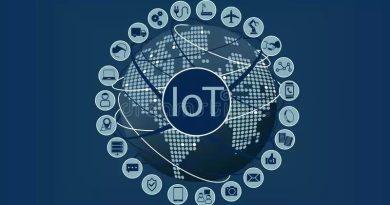Exploring the Potential of Generative AI in the IoT Landscape
Generative AI revolutionizes the IoT landscape, empowering innovators and researchers. It enhances security, optimizes resource management, and accelerates innovation. Unlocking IoT's potential, Generative AI reshapes the future, fueling advancements in the ever-evolving tech industry. Explore limitless possibilities and stay ahead with this groundbreaking technology.
The rapid advancement of the Internet of Things (IoT) has revolutionized numerous industries, presenting opportunities for unprecedented connectivity and data-driven innovation. As technology innovators, researchers, and professionals in the field, it is crucial to explore emerging technologies that can further enhance the IoT ecosystem. One such technology with immense potential is Generative AI, a cutting-edge approach that can empower the IoT landscape in remarkable ways.
Understanding Generative AI: Pioneering New Frontiers in the IoT
Unveiling the Essence of Generative AI
Generative AI, a remarkable subset of artificial intelligence, empowers machines to create or generate content that mirrors the characteristics of the training data it has acquired. In the IoT domain, Generative AI offers unparalleled potential for generating data that is not only realistic but also contextually relevant. By simulating and generating data that aligns with the intricate IoT landscape, Generative AI becomes a catalyst for revolutionizing simulations, predictive analytics, and decision-making processes.
Empowering Realistic Simulations
Generative AI breathes life into simulations within the IoT landscape, enabling technology innovators and researchers to recreate real-world scenarios with astonishing accuracy. By leveraging vast datasets and powerful Generative AI algorithms, we can generate data that emulates the behavior and interactions of IoT devices, environments, and networks. This paves the way for comprehensive and immersive simulations, providing valuable insights into the functioning, optimization, and resilience of IoT systems.
Unleashing the Potential of Predictive Analytics
Predictive analytics has long been a cornerstone of the IoT ecosystem, driving informed decision-making and facilitating proactive measures. Generative AI takes predictive analytics to new heights by generating data that represents potential future scenarios. By simulating various conditions and extrapolating insights, Generative AI empowers researchers and professionals to make data-driven predictions, anticipate challenges, and optimize IoT operations with unwavering precision.
Amplifying Decision-Making Processes
Effective decision-making is the backbone of successful IoT implementations. Generative AI enhances decision-making by generating diverse and contextually relevant data that encompasses the intricate nuances of the IoT landscape. Armed with this wealth of data, technology innovators and professionals can gain a holistic understanding of the IoT ecosystem, enabling them to make well-informed decisions that lead to enhanced operational efficiency, improved user experiences, and strategic advancements.
Fortifying IoT Security: Harnessing the Power of Generative AI
In the rapidly evolving landscape of the Internet of Things (IoT), security stands as a paramount concern. As technology innovators, researchers, and professionals, we are constantly challenged by the need to safeguard IoT systems from emerging threats. Traditional security measures often struggle to keep pace with the ever-evolving nature of these risks. However, a groundbreaking approach known as Generative AI offers a fresh perspective in fortifying IoT security. By utilizing advanced algorithms and techniques, Generative AI enables us to identify vulnerabilities, simulate attacks, uncover potential weaknesses, and develop innovative security solutions. In this article, we will explore the transformative potential of Generative AI in enhancing IoT security, providing actionable insights to safeguard our IoT infrastructure effectively.
Identifying Vulnerabilities and Generating Robust Countermeasures
In the interconnected realm of IoT, the identification of vulnerabilities is critical for proactive security. Generative AI, with its advanced capabilities, empowers us to uncover potential weaknesses that may go unnoticed by traditional security measures. By harnessing the power of Generative AI algorithms, researchers can simulate attacks and generate realistic scenarios, revealing hidden vulnerabilities within the IoT infrastructure. This data-driven approach provides valuable insights, enabling us to develop robust countermeasures that can withstand sophisticated threats.
Simulating Attacks for Comprehensive Defense Strategies
To develop effective security solutions, it is essential to have a deep understanding of potential attack vectors. Generative AI allows us to simulate various attack scenarios, mimicking the strategies employed by malicious actors. By leveraging this technology, we can gain invaluable insights into the vulnerabilities that IoT systems may face. This information acts as a foundation for developing comprehensive defense strategies, ensuring that our IoT infrastructure remains resilient against evolving threats.
Uncovering Unobvious Weaknesses and Novel Attack Vectors
Traditional security measures often focus on known vulnerabilities, leaving room for unobvious weaknesses to be exploited. Generative AI expands our perspective by uncovering these unobvious weaknesses, which may not be readily apparent through conventional means. By employing cutting-edge algorithms, researchers can analyze complex patterns, detect subtle vulnerabilities, and anticipate novel attack vectors. This proactive approach empowers us to stay one step ahead of potential threats, enhancing the security of our IoT systems.
Developing Innovative Security Solutions for the IoT Landscape
The integration of Generative AI with IoT security allows us to develop innovative and effective solutions. By combining the power of AI with our domain expertise, we can create intelligent systems that adapt and evolve alongside emerging threats. These advanced security solutions leverage Generative AI algorithms to continuously learn, detect anomalies, and respond swiftly to potential attacks. Through this iterative process, we can establish a resilient IoT infrastructure that safeguards sensitive data and ensures the seamless operation of critical systems.
Optimizing Resource Management and Accelerating Innovation in IoT through Generative AI
Efficient resource management is a fundamental aspect of successful IoT implementations. In this era of interconnected devices, the ability to optimize resource allocation, energy consumption, and network utilization is paramount. Generative AI emerges as a powerful ally in this endeavor, enabling researchers and technology innovators to develop intelligent systems that adapt autonomously to dynamic conditions. By leveraging Generative AI techniques, the IoT ecosystem can achieve enhanced efficiency, ensuring optimal resource utilization and propelling innovation to new heights.
Optimizing Resource Management: Maximizing Efficiency and Utilization
- Dynamic Resource Allocation: In the realm of IoT, resource allocation needs to be responsive to changing demands. Generative AI empowers intelligent systems to adapt dynamically, optimizing resource allocation to match real-time requirements. By utilizing algorithms trained on vast amounts of data, researchers can develop sophisticated models that make accurate predictions, allowing for proactive resource allocation and minimizing waste.
- Energy Conservation: Energy consumption is a critical concern within IoT deployments. Generative AI can assist in identifying energy-saving opportunities and developing intelligent mechanisms to curtail wasteful usage. By analyzing data patterns, Generative AI algorithms can uncover energy consumption trends, enabling researchers to create innovative solutions that minimize power consumption without compromising functionality.
- Network Utilization and Bandwidth Optimization: Efficient network utilization is vital for maintaining seamless connectivity in the IoT landscape. Generative AI techniques can play a pivotal role in optimizing network resources and bandwidth allocation. By leveraging sophisticated algorithms, researchers can develop intelligent systems that intelligently distribute network traffic, ensuring smooth operations and reducing bottlenecks that can hamper performance.
Accelerating Innovation: Expanding Possibilities and Driving Advancements
- Training Generative AI Models on IoT Data: Generative AI has the potential to unlock new possibilities within the IoT domain by training models on vast volumes of IoT data. By feeding the models with diverse datasets, researchers gain valuable insights that can fuel innovation. This approach enables the development of advanced predictive models, allowing for more accurate forecasting, proactive decision-making, and effective automation processes.
- Refining Automation Processes: Generative AI can revolutionize automation within IoT systems. By leveraging its capabilities, researchers can refine and optimize existing automation processes. Intelligent systems empowered by Generative AI can adapt to dynamic conditions, adjusting workflows and configurations in real-time to maximize efficiency and minimize errors. This leads to improved operational effectiveness and increased productivity.
- Pushing Boundaries with Innovative IoT Applications: Generative AI has the potential to push the boundaries of technological advancements within the IoT landscape. By leveraging its capabilities, researchers can develop innovative applications that were previously unimaginable. From smart cities to industrial automation, Generative AI-driven IoT applications can revolutionize how we interact with technology, leading to transformative changes in various sectors.
As technology innovators, researchers, and professionals exploring the vast potential of Generative AI within the Internet of Things (IoT) landscape, it is imperative that we delve into the ethical implications of this transformative technology. By proactively addressing the challenges surrounding data privacy, algorithmic bias, and accountability, we can ensure that the promise of Generative AI in the IoT ecosystem is harnessed responsibly and sustainably. In this article, we will unravel the intricate ethical considerations and outline future directions for navigating this dynamic field.
Unraveling the Ethical Landscape of Generative AI in IoT
Data Privacy: Safeguarding the Digital Identity
In the realm of Generative AI and IoT, data privacy emerges as a paramount concern. As technology continues to intertwine with our daily lives, it is vital to establish robust frameworks that protect individuals’ digital identities. Innovative approaches, such as federated learning and privacy-preserving algorithms, can empower IoT systems to generate meaningful insights while upholding privacy rights.
Algorithmic Bias: Striving for Fairness and Equity
Generative AI algorithms are susceptible to biases present in training data, leading to unfair or discriminatory outcomes. As we advance in this field, it is our responsibility to meticulously design, train, and validate models to ensure they do not perpetuate biases. Embracing transparency, explainability, and diversity in data collection and model creation will be instrumental in cultivating fairness and equity within the IoT landscape.
Accountability: Emphasizing Responsibility and Transparency
With great power comes great responsibility. As Generative AI pushes boundaries, it is crucial for technology innovators, researchers, and professionals to foster a culture of accountability. By adopting robust auditing mechanisms, conducting thorough risk assessments, and establishing transparent governance frameworks, we can promote trust and ensure that the potential risks associated with Generative AI in IoT are managed effectively.
Charting Future Directions for Responsible Generative AI in IoT
Ethical Guidelines: Forging a Common Path
To navigate the complexities of Generative AI in IoT, it is imperative to establish ethical guidelines that serve as beacons of responsible innovation. Collaborative efforts from industry leaders, research institutions, and regulatory bodies are necessary to develop and refine these guidelines. By adhering to a unified set of principles, we can harmonize practices and pave the way for a sustainable future.
Interdisciplinary Collaboration: Bridging the Gaps
Addressing ethical considerations requires a multidisciplinary approach. Encouraging collaboration among technologists, ethicists, policymakers, and social scientists can help us gain diverse perspectives and insights. This collective effort will enable us to uncover unforeseen risks, develop robust safeguards, and ensure that Generative AI aligns with societal values and aspirations.
Public Engagement and Awareness: Empowering the Community
The ethical implications of Generative AI in IoT demand broader engagement and awareness. By fostering open dialogue, knowledge-sharing, and public discourse, we can raise awareness about the potential benefits and risks. Empowering individuals to actively participate in shaping the future of Generative AI in IoT will contribute to more inclusive, transparent, and accountable outcomes.
Generative AI represents a powerful frontier for technology innovators, researchers, and IoT professionals. By harnessing its capabilities, we can revolutionize the IoT ecosystem with improved security, optimized resource management, accelerated innovation, and ethical considerations. Together, let’s shape a smarter and connected future for the Internet of Things by leveraging the potential of Generative AI.




